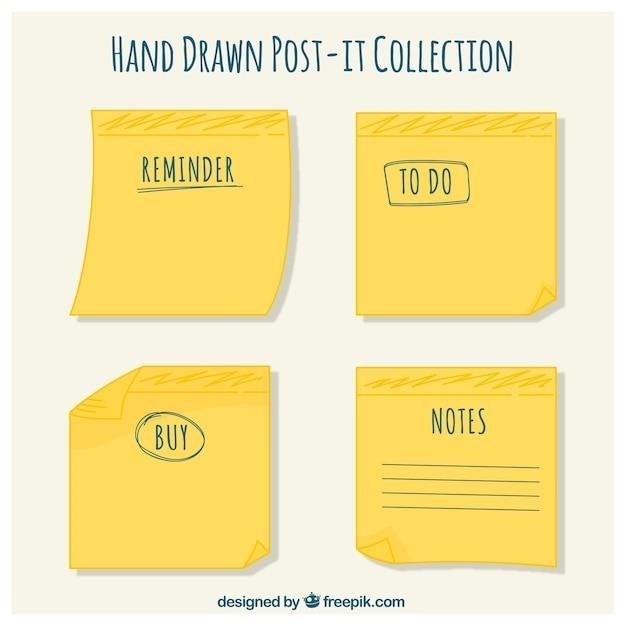Made to Stick⁚ A Framework for Memorable Ideas
In a world overflowing with information, how do we make our ideas stand out? How do we ensure that our messages resonate and stick with people long after they’ve heard them? Chip and Dan Heath, in their book “Made to Stick,” provide a framework for creating memorable ideas that will captivate audiences and drive lasting impact․ This framework, known as SUCCESs, guides us through the essential elements of crafting ideas that are simple, unexpected, concrete, credible, emotional, and story-based․
The Curse of Knowledge
Imagine you’re trying to explain a complex concept to someone who has no prior knowledge of it․ You find yourself struggling to simplify the explanation, assuming they already understand the underlying principles․ This is the curse of knowledge, a phenomenon that plagues communicators and hinders the effective sharing of ideas․ We, as experts, often forget that our audience doesn’t share our level of understanding․ The knowledge we possess becomes a barrier to effective communication, making it difficult to convey ideas in a way that is both clear and engaging․
The Heath brothers illustrate this concept with the analogy of a seasoned musician trying to teach a beginner a simple tune․ The musician, deeply immersed in the nuances of music theory and technique, might inadvertently throw in advanced concepts that overwhelm the beginner․ This is the curse of knowledge in action⁚ the expert’s knowledge blinds them to the needs of the novice․ To effectively communicate an idea, we must overcome this curse by consciously stepping outside our own knowledge and understanding the perspective of our audience․
The “Made to Stick” framework provides valuable tools for navigating this challenge․ By focusing on principles like simplicity, concreteness, and storytelling, we can bridge the gap between our knowledge and our audience’s comprehension․ The curse of knowledge is a formidable obstacle, but with careful consideration and strategic communication, we can create ideas that stick and leave a lasting impression․
The Anatomy of Sticky Ideas
What makes an idea truly memorable? What separates a message that fades into oblivion from one that lingers in our minds, influencing our thoughts and actions? The Heath brothers delve into this question in “Made to Stick,” dissecting the anatomy of ideas that stick and revealing the key ingredients that contribute to their enduring power․
They propose a framework, aptly named SUCCESs, which outlines six fundamental principles⁚ Simplicity, Unexpectedness, Concreteness, Credibility, Emotionality, and Storytelling․ These principles are not merely abstract concepts but tangible tools that can be applied to any idea, from a marketing campaign to a scientific discovery․ By understanding the anatomy of sticky ideas, we gain the power to craft messages that resonate deeply and leave a lasting impact․
The SUCCESs framework isn’t just a checklist of elements; it’s a roadmap for creating ideas that capture attention, spark curiosity, and ultimately, stick in the minds of our audience․ It emphasizes the importance of simplifying complex concepts, using concrete examples to illustrate abstract ideas, and connecting with audiences on an emotional level․ The framework recognizes that credibility and storytelling are crucial for building trust and making ideas relatable․ By embracing these principles, we can transform ordinary ideas into extraordinary ones, creating lasting impact in a world saturated with information․
Simple⁚ Making Ideas Easy to Understand
In a world bombarded by information, simplicity is a powerful tool․ “Made to Stick” emphasizes this principle, arguing that complex ideas can be made more memorable by distilling them down to their core essence․ The authors use the analogy of a battle plan, which often fails when it encounters the unpredictable realities of the battlefield․ Similarly, in business, sales plans can fall apart when faced with the complexities of customer behavior․ The same holds true in education, where lesson plans can struggle to engage teenagers with their intricacies․
To achieve success, the first step is to simplify; This doesn’t mean dumbing down ideas; rather, it involves finding the most essential elements and expressing them in a clear and concise manner․ “Made to Stick” offers several strategies for achieving simplicity, including using familiar language, avoiding jargon, and focusing on a single, central message․ By stripping away extraneous details and focusing on the core concept, we can create ideas that are more easily grasped and remembered․
The authors argue that simplicity isn’t just about making information digestible; it’s also about making it memorable․ When ideas are presented in a simple, straightforward way, they become more likely to stick in our minds, influencing our thoughts and actions․ Simplicity isn’t just a stylistic choice; it’s a key to unlocking the power of ideas․
Unexpected⁚ Capturing Attention and Breaking Expectations
In a world saturated with information, capturing attention is a constant struggle․ “Made to Stick” highlights the power of the unexpected in achieving this goal; Just as a sudden burst of color can disrupt a monotonous landscape, a surprising twist or unexpected turn can jolt us out of our mental routines and grab our attention․ This principle is rooted in the human brain’s natural inclination toward novelty, a drive that keeps us engaged and curious․
The book emphasizes that unexpectedness isn’t just about shock value; it’s about creating a sense of intrigue and curiosity; By violating our expectations, ideas become more memorable and engaging․ “Made to Stick” suggests a range of techniques for introducing unexpected elements, including using unexpected juxtapositions, challenging conventional wisdom, and presenting information in a novel format․ By breaking free from the predictable, we can create ideas that stand out from the crowd and leave a lasting impression․
Unexpectedness is particularly effective in the context of persuasion․ When we encounter an idea that challenges our preconceived notions, we are more likely to pause, consider it, and potentially change our minds․ By leveraging the power of the unexpected, we can not only capture attention but also spark meaningful conversations and drive lasting change․
Concrete⁚ Creating Tangible Images and Examples
Abstract concepts, while intellectually stimulating, often fail to leave a lasting impression․ “Made to Stick” emphasizes the importance of concreteness in crafting memorable ideas․ By grounding our ideas in tangible images and real-world examples, we make them more relatable and easier to grasp․ This principle is rooted in the human brain’s preference for visual and experiential learning, making abstract concepts more accessible and engaging․
The book suggests using vivid imagery, compelling stories, and relatable scenarios to bring our ideas to life․ Instead of relying on jargon or technical terms, we should strive to use language that creates clear mental pictures․ For instance, instead of saying “The company is experiencing financial difficulties,” we could say “The company’s sales are plummeting like a meteor․” This vivid imagery creates a stronger impression and helps the audience connect with the idea on a deeper level․
By incorporating concrete examples, we provide a framework for understanding complex ideas․ These examples serve as bridges between the abstract and the tangible, allowing the audience to connect with the idea and draw their own conclusions․ “Made to Stick” reminds us that concreteness is not about simplifying ideas; it’s about making them more relatable, memorable, and impactful․
Credible⁚ Building Trust and Authority
In the sea of information we navigate daily, trust is a precious commodity․ “Made to Stick” highlights the importance of credibility in making ideas stick․ For an idea to resonate, it needs to be perceived as believable and trustworthy․ This doesn’t necessarily mean relying on statistics or scientific studies alone; it’s about establishing a sense of authority and building confidence in the message being conveyed․
One way to achieve credibility is by drawing upon established authorities or experts in the field․ Citing reputable sources, sharing testimonials from respected individuals, or using data from reliable organizations can bolster the perceived legitimacy of an idea․ However, it’s crucial to ensure these sources are relevant and trustworthy, as using dubious sources can backfire and undermine the credibility of the message․
Another key aspect of credibility is demonstrating a genuine understanding of the subject matter․ This involves presenting information in a clear and concise manner, avoiding jargon, and acknowledging potential counterarguments․ By showcasing expertise and transparency, we build trust with the audience and make them more receptive to the ideas being presented․ Ultimately, credibility is about establishing a foundation of trust, which allows ideas to take root and have a lasting impact․
Emotional⁚ Connecting with Audience Feelings
While logic and reason play a role in how we process information, emotions hold immense power in shaping our perceptions and influencing our decisions․ “Made to Stick” emphasizes the crucial role of emotional connection in making ideas stick․ When we tap into people’s emotions, we create a deeper level of engagement, making ideas more memorable and impactful․
One way to achieve emotional resonance is by using stories that evoke empathy and create a sense of shared experience․ Stories allow us to connect with characters and situations on a personal level, making the message more relatable and powerful․ For example, a story about a struggling entrepreneur overcoming adversity can inspire hope and motivation, making the idea of perseverance more meaningful․
Another approach is to appeal to fundamental human values, such as fairness, justice, or compassion․ By aligning ideas with these core values, we evoke strong emotional responses that resonate with audiences on a deeper level․ For instance, a campaign promoting environmental conservation can tap into people’s desire to protect our planet and leave a positive legacy for future generations․
Stories⁚ Making Ideas Relatable and Engaging
Humans are wired for stories․ From ancient cave paintings to modern-day movies, storytelling has been a fundamental part of our existence, allowing us to connect with each other and make sense of the world․ “Made to Stick” highlights the power of stories in making ideas memorable and impactful․ When we present information through a narrative, we engage our audience’s imagination and create a lasting impression․
Stories provide a framework for understanding complex ideas, making them more accessible and relatable․ By weaving a narrative around a message, we can illustrate its relevance to our audience’s lives and experiences․ This allows them to connect with the information on an emotional level, making it more memorable and influential․
Stories also act as powerful tools for persuasion and influence․ By sharing compelling narratives, we can evoke emotions, change perceptions, and motivate action․ Whether it’s a story about overcoming adversity or a tale of innovation and progress, stories have the power to inspire, educate, and move audiences to action․ The key is to craft stories that resonate with our audience’s values and experiences, making them feel a personal connection to the message․
The Velcro Theory of Memory
Imagine trying to remember a random string of numbers, like 375914․ It’s a difficult task, right? Now imagine trying to remember a memorable phrase, like “I love my cat․” The latter is much easier, isn’t it? This is where the Velcro Theory of Memory comes in․ It’s a concept from “Made to Stick” that explains how our brains process and retain information․
The theory suggests that our memories are like pieces of Velcro․ Some information, like random numbers, is like smooth fabric, easily slipping off the Velcro․ Other information, like memorable phrases, is like rough fabric, clinging tightly to the Velcro․ To make our ideas stick, we need to create information that is “rough” enough to attach to the Velcro of our audience’s minds․
This means using techniques like vivid imagery, strong emotions, and relatable stories to make our ideas more memorable․ By creating connections between information and existing knowledge, we can increase its stickiness and make it more likely to be recalled․ The Velcro Theory of Memory reminds us that the key to making ideas stick is not simply presenting the information, but finding ways to make it “sticky” enough to be remembered․

Curiosity Gaps⁚ Creating a Desire for More Information
Have you ever been engrossed in a good mystery novel, eagerly turning pages to uncover the truth? That feeling of wanting to know more, of being drawn in by a puzzle, is what the authors of “Made to Stick” call a curiosity gap․ It’s a powerful tool for making ideas stick, as it taps into our innate desire for knowledge and understanding․
A curiosity gap is created when we present information that sparks a question in the listener’s mind․ It’s about creating a sense of intrigue, a desire to fill in the missing pieces․ Think of it as a “teaser” that piques our interest and motivates us to seek out more information․
For example, a speaker might start a presentation by stating a surprising statistic or presenting a counterintuitive fact․ This unexpected information creates a gap in our knowledge, prompting us to want to learn more․ The authors of “Made to Stick” argue that curiosity gaps are essential for making ideas memorable, as they engage our brains and make us more receptive to the information being presented․
The Human Scale Principle
In the pursuit of making ideas stick, the authors of “Made to Stick” advocate for a principle that might seem counterintuitive⁚ the human scale principle․ This principle suggests that we often connect more deeply with ideas when they are presented in a way that feels relatable and personal, rather than being overly abstract or grand․
Imagine trying to grasp a complex economic theory․ Would you find it easier to understand if it were presented as a dry academic lecture or if it were illustrated through the story of a struggling family trying to make ends meet? The latter, with its focus on human experiences, is more likely to resonate with us and make the abstract concept feel tangible․
The human scale principle encourages us to ground our ideas in the everyday lives of individuals; It’s about finding ways to connect with our audience on an emotional level by showing how our ideas impact their lives, their relationships, and their hopes and dreams․ By making our ideas relatable, we make them stickier and more likely to be remembered and acted upon․
Applying the SUCCESs Framework in Practice
The SUCCESs framework, as presented in “Made to Stick,” is more than just a theoretical concept; it’s a practical guide for crafting impactful ideas․ The authors offer numerous real-world examples to illustrate how this framework can be applied in diverse settings, from marketing campaigns to educational materials to political speeches․
For instance, they analyze the success of the “Keep America Beautiful” campaign, which used a simple, unexpected, and concrete image—a crying Native American—to drive home the message of environmental responsibility․ They also examine how the “Don’t Mess with Texas” campaign leveraged a catchy slogan and a surprising approach to change litter habits․
The book emphasizes that the SUCCESs framework is not a rigid formula but a flexible set of principles that can be adapted to various contexts․ It encourages readers to think critically about their ideas and to consider how each element of the framework can be used to enhance their memorability and effectiveness․




